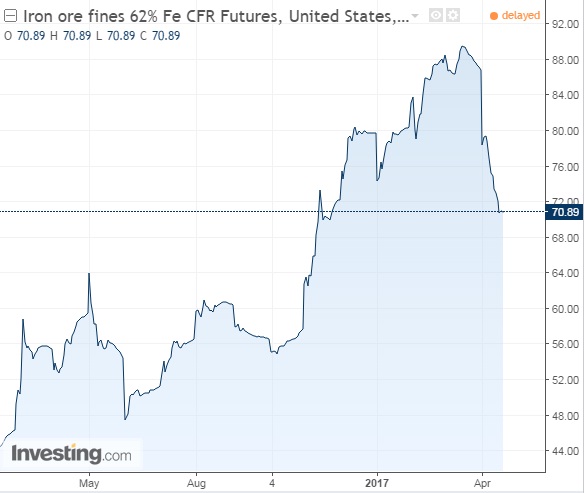The President of the United States Donald Trump has used a 1962 law to sign an executive order to launch an investigation with gives the department of commerce to assess, whether importing steel, which has both civilian and military applications threaten national security or not. Mr. Trump said that it is a historic day for American Steel but he insisted that the executive order is not aimed at China, which is the largest global producer and importer of steel. Mr. Trump said, “Steel is critical to both our economy and our military. This is not an area where we can afford to become dependent on foreign countries.”
President Trump’s commerce secretary Wilbur Ross said that the investigation can be completed well before the timeline of 270 days. Mr. Ross said the administration was concerned that rising steel imports were threatening US industry and its ability to respond quickly to national security needs.
This new executive order is of utmost importance for foreign steel companies as the Trump administration plans to reveal its trillion dollar infrastructure plans.
While the executive order opens the path to measures against foreign steel imports, it is not likely to change the net demand immediately. However, the order is still not a good one for Iron ore, which is the most important steel making ingredient. China is the biggest producer of steel and the biggest consumer or iron ore. The order will eventually lead to slower exports for Chinese steel, which has a market share of almost 26 percent in the US import market. The ripple effects in the Chinese economy would eventually lead to the lower domestic demand of steel.
The price of Iron ore has declined more than 20 percent since March and is currently trading at $70.9 per ton. It is likely to slide down further.



 Japan PMI Data Signals Manufacturing Stabilization as Services Continue to Drive Growth
Japan PMI Data Signals Manufacturing Stabilization as Services Continue to Drive Growth  U.S. Dollar Slips Near Two-Month Low as Markets Await Key Jobs Data and Central Bank Decisions
U.S. Dollar Slips Near Two-Month Low as Markets Await Key Jobs Data and Central Bank Decisions  Asian Stocks Slide as Central Bank Decisions and Key Data Keep Investors Cautious
Asian Stocks Slide as Central Bank Decisions and Key Data Keep Investors Cautious  Gold Prices Slip Slightly in Asia as Silver Nears Record Highs on Dovish Fed Outlook
Gold Prices Slip Slightly in Asia as Silver Nears Record Highs on Dovish Fed Outlook  Oil Prices Slip in Asia as 2026 Supply Glut Fears and Russia-Ukraine Talks Weigh on Markets
Oil Prices Slip in Asia as 2026 Supply Glut Fears and Russia-Ukraine Talks Weigh on Markets  Ireland Limits Planned Trade Ban on Israeli Settlements to Goods Only
Ireland Limits Planned Trade Ban on Israeli Settlements to Goods Only  U.S. Stock Futures Mixed as Tech and AI Stocks Face Pressure Ahead of CPI Data
U.S. Stock Futures Mixed as Tech and AI Stocks Face Pressure Ahead of CPI Data  South Korea Extends Bond Market Stabilization Measures Amid Rising Financial Risks
South Korea Extends Bond Market Stabilization Measures Amid Rising Financial Risks  Fed Near Neutral Signals Caution Ahead, Shifting Focus to Fixed Income in 2026
Fed Near Neutral Signals Caution Ahead, Shifting Focus to Fixed Income in 2026 
































